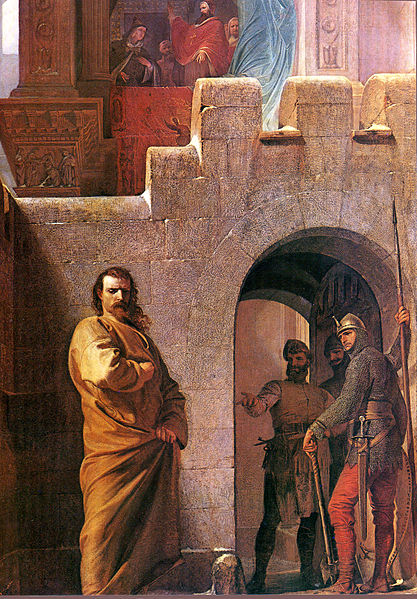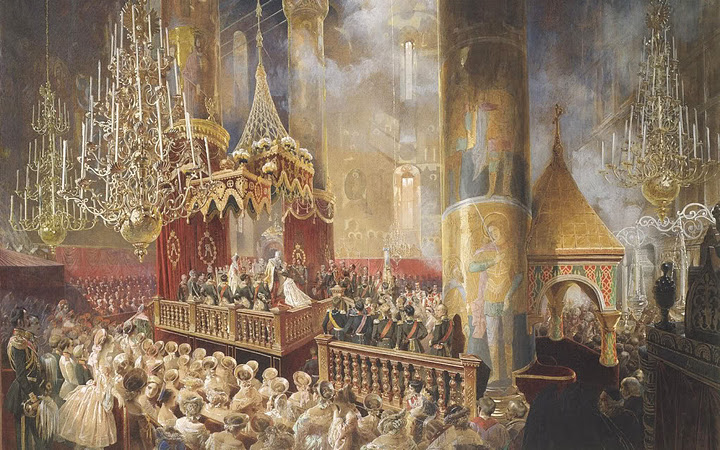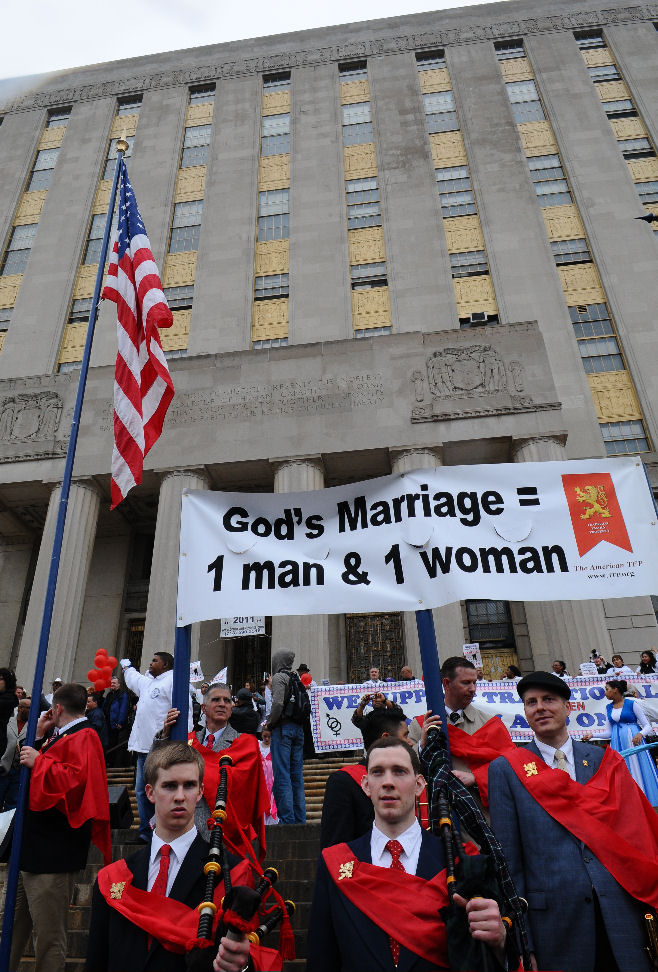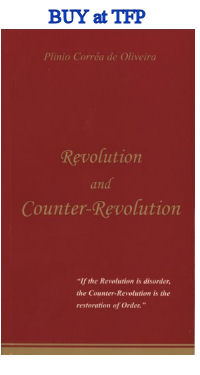1. What Is To Be Restored
If the Revolution is disorder....
If the Revolution is disorder, the Counter-Revolution is the restoration of order. And by order we mean the peace of Christ in the Reign of Christ, that is, Christian civilization, austere and hierarchical, fundamentally sacral, antiegalitarian, and antiliberal.
....the Counter-Revolution is the restoration of order.
2. What Is To Be Innovated
However, by force of the historical law according to which immobility does not exist in temporal things, the order born of the Counter-Revolution must have its own characteristics that will make it different from the order that existed before the Revolution. Of course, this affirmation does not refer to principles but to accidents. These accidents are, nevertheless, of such importance that they deserve to be mentioned.
Since it is impossible for us to go into this matter at length, we will merely note that, in general, when a fracture or a laceration occurs in an organism, the zone of mending or healing is marked by special safeguards. It is the loving care of Providence acting through secondary causes against the possibilities of a new disaster.
This can be observed in the case of broken bones, whose mend forms as a reinforcement in the very zone of the fracture, or in the case of scar tissue. This is a material image of an analogous fact that takes place in the spiritual order. As a general rule, the sinner who truly amends has a greater horror for sin than he had in the best years before his fall. Such is the history of the penitent saints. So, also, after each trial, the Church emerges specially armed against the evil that tried to prostate her. A typical example of this is the Counter-Reformation.
In general, when a fracture or a laceration occurs in an organism, the zone of mending or healing is marked by special safeguards.
By virtue of this law, the order born of the Counter-Revolution will have to shine even more than that of the Middle Ages in the three principal points in which the latter was wounded by the Revolution:
· A profound respect for the rights of the Church and of the Papacy, and the sacralization, to the utmost possible extent, of the values of temporal life, all of this out of opposition to secularism, interconfessionalism, atheism, and pantheism, as well as their respective consequences.
The excommunicated Henry IV at Canossa doing public penance with Pope Gregory VII looking on. Painting by Eduard Schwoiser
· A spirit of hierarchy marking all aspects of society and State, of culture and life, out of opposition to the egalitarian metaphysics of the Revolution.
Coronation of Tsar Alexander II by Mikhail Zikhi
· A diligence in detecting and combating evil in its embryonic or veiled forms, in fulminating it with execration and a note of infamy, and in punishing it with unbreakable firmness in all its manifestations, particularly in those that offend against orthodoxy and purity of customs, in opposition to the liberal metaphysics of the Revolution and its tendency to give free rein and protection to evil.
Bronx, New York Traditional Marriage Rally on May 15, 2011
Plinio Corrêa de Oliveira, Revolution and Counter-Revolution (York, Penn.: The American Society for the Defense of Tradition, Family, and Property, 1993), Part II, Ch. II, pp. 75-76.









No comments:
Post a Comment